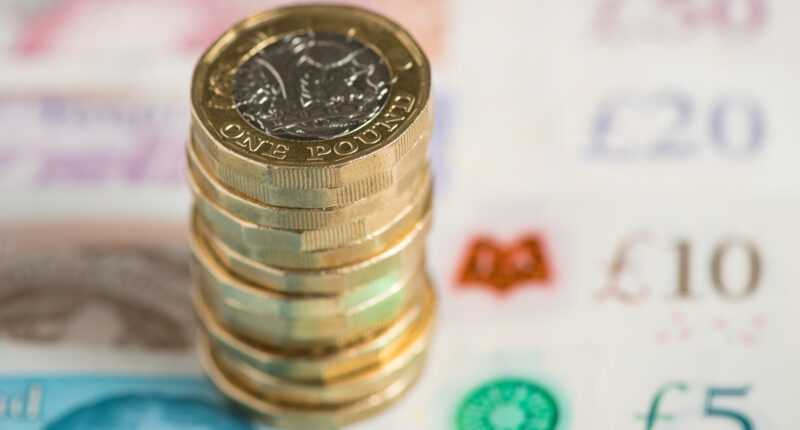NEXT Wednesday marks the end of the tax year and the deadline for claiming tax credits, benefits and using up your tax-free allowances.
Every year you’re entitled to a variety of tax perks from the government, including payments if you’re a pensioner and a cash bonus if you’re a first-time buyer.
But the clock to claim these benefits, worth up to thousands of pounds, runs out next week.
A host of other tax changes will also come in when the new tax year start on April 6, including a rise in the state pension and higher Universal Credit payments.
Here’s what you need to do before the end of the tax year on April 5 to avoid missing out on money you’re owed – and it could add up to thousands of pounds.
1. Watch out for stealth taxes
The government has frozen income tax bands again and with inflation over 10 per cent, that amounts to a stealth tax rise.


If you earn less than £12,570 in a year, you don’t have to pay tax or national insurance on your income.
Income between £12,570 and £50,271 is taxed at the basic rate of 20% and between £50,271 and £125,140 at the higher rate of 40%.
Income above that is taxed at the additional rate of 45%.
With the cost of living rocketing, many people have asked for and been given a pay rise.
Most read in Money
The Office for Budget Responsibility has said that will mean more than three million people will have to pay income tax for the first time.
If you’re earning close to one of the income tax thresholds and are due a pay rise, it might be worth upping your pension contributions so don’t pay the extra tax.
2. Check if you can claim tax relief on work expenses
If you’re spending money on things because you have to for your job, you may be able to get tax relief in a few ways.
During the pandemic government allowed everyone working from home to claim tax relief on some of their costs, including business phone calls and energy bills.
This year the rules go back to normal and you won’t be able to claim unless your job requires you to live far away from your office or there is no office.
It is still worth checking if you can claim as you may be able to get 20% of your costs back.
Check the government website to see if you can claim for this and other work expenses including mileage, specialist equipment and more.
3. Check your entitlement to the marriage allowance
Couples across the UK who are married or civil partnered could get tax back thanks to the marriage allowance.
You can transfer up to a maximum of £1,260 of your tax-free personal income allowance to your partner each year so long as one of you doesn’t earn more than £12,570 a year and the other pays basic rate tax.
If you claim the maximum, that would save you £252 on your joint income tax bill this year.
You are also allowed to backdate your claim for up to four years as long as you met the criteria.
This would net you an extra £970 in tax savings bringing the total amount you’ve got back up to £1,220.
You have until the end of this tax year to backdate a claim for any year you were eligible back as far as April 5, 2018.
You can apply for the marriage allowance tax break at gov.uk.
4. Check your tax code
If your code was wrong and you overpaid tax in the 2018-19 tax year you’ll need to claim it by April 5 this year.
Tax code mistakes can happen if you change jobs or started receiving benefits and it’s up to you to spot any error and tell HMRC.
There’s a limit of four years on claiming back overpaid tax, so it’s your last chance to fix any errors and get money back for 2018-19.
Here’s how you can claim a rebate from HMRC if you think you’re owed tax back.
5. Uniform tax rebate
If you wear a uniform for work and your employer doesn’t pay for it, you could be entitled to claim tax back on the cost.
You can claim tax back on £60 a year’s worth of uniform costs, so for basic rate taxpayers that’s £12 a year and for higher rate taxpayers that’s £24 a year.
It’s another tax rebate you can claim for the previous four years, meaning you’ve got just days to claim it for 2018-19 if you were eligible.
It’s also worth noting that some jobs come with a flat rate uniform allowance.
Pilots and flight deck crew can claim up to £1,022 a year, joiners up to £140 and ambulance staff up to £185 a year.
6. Use up your ISA allowance
Savers will want to make the most of their Isa allowances before the end of the tax year.
An Isa (individual savings account) is a type of savings account where you don’t pay any tax on interest earned.
Each year you get an allowance which is the total amount you can save into it each year to take advantage of this tax benefit.
You can save up to £20,000 each year into an Isa and if you don’t use it up you can’t carry it over to the next year.
First-time buyers saving into a Lifetime Isa (LISA) can save up to £4,000 into this account each year tax-free.
The huge benefit of Isas is that you’ll pay no income tax or capital gains tax on the interest you earn in the account, dividends paid to you and profit made by selling investments held in the Isa.
How do you switch Isa provider?
If you’re in the market for a new, better-paying Isa, there’s one thing you shouldn’t do.
Never withdraw money from your Isa account to put it into your new one – if you do it’ll lose its tax-free benefits.
Instead, you need to follow the simple transfer process.
Make sure that the new account you want to use accepts transfers (not all do) and then fill in the Isa transfer form with the new provider.
It will arrange for your savings to be transferred over, with the process taking no more than 15 working days.
And remember, you can only have one “active” cash Isa per tax year.
If you put your cash in a bog standard bank account that’s not an Isa, you’ll be taxed on any interest over £1,000 if you’re a basic-rate taxpayer.
For higher rate taxpayers it’s £500 while additional rate taxpayers don’t get this allowance, which is known as the personal savings allowance (PSA).
The Isa tax-free allowance is more generous than the PSA which is useful if you have more saved.
7. Use up your child’s Isa allowance
Junior Isas, known as Jisas for short, are savings accounts for kids that work in the same way.
But the amount you can save into one tax-free each year is lower, at £9,000.
8. Check your child benefit
Child benefit is worth £21.80 a week for your first or eldest child, then £14.45 for each child after that.
Watch out for the High Income Child Benefit Charge though, as you lose all child benefits when you earn over £60,000.
Meanwhile, anyone earning over £50,000 has to pay back a portion of the money in the form of extra income tax.
A change in situation, such as a salary increase or new partner, could change entitlement to child benefits because of these rules.
This can result in a big bill to repay, even adding up to thousands of pounds for some families.
Before the end of the tax year if you find you earn over this amount it could be worth looking at ways to reduce your taxable income within the rules.
For instance, putting money into a workplace pension or using employer salary sacrifice schemes can reduce your taxable income without losing money.
Salary sacrifice is an agreement to reduce an employee’s cash pay for non-cash benefits, like childcare vouchers or cycle to work scheme.
9. Use up your capital gains tax allowance
Capital gains tax is charged on the profit you make when you sell something that has gone up in value, such as stock and shares, artwork or even a second home.
The first £12,300 of profit is tax-free but after that, you’ll be charged up to 28% depending on what rate taxpayer you are and what you sold.


If you’re planning on selling something and the profits could be over this amount, cashing in at the right time can keep profits below the threshold or reduce your capital gains tax bill.
For example, cash in stocks and shares in two transactions over this and next tax year rather than in a single transaction.










